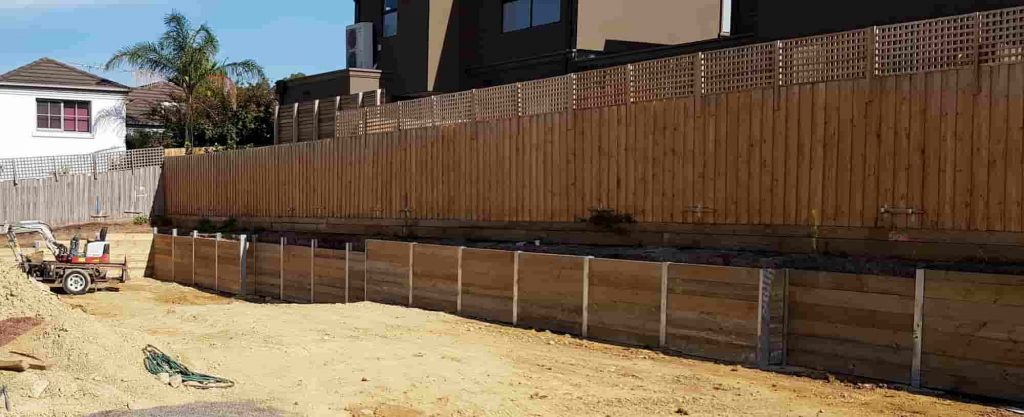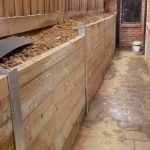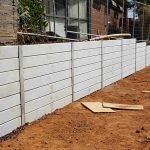Introduction
Building a maintaining wall is no small accomplishment. It involves cautious planning, skilled execution, and most significantly, the ideal products. With numerous choices available, understanding the options can empower property owners and builders alike to make informed choices. This article dives deep into the remarkable world of keeping wall materials, exploring what retaining wall professionals utilize to make sure durability, performance, and visual appeal.
What Are Retaining Walls?

Retaining walls are structures designed to keep back soil or rock from a structure or location. They are important in areas with considerable elevation modifications, offering stability and avoiding disintegration. The option of material can substantially affect the wall's structural stability, life expectancy, and look.
Why Pick the Right Product for Retaining Walls?
1. Structural Integrity
The main purpose of a retaining wall is to withstand lateral pressure from soil. Picking a robust product makes sure that your wall will endure these forces in time without drooping or collapsing.
2. Aesthetic Appeal
A sound retaining wall can improve the visual landscape of your home. Choosing enticing materials allows homeowners to create a seamless blend between nature and construction.
3. Cost-Effectiveness
Different materials feature varying price. While some might have greater preliminary costs, they could save money in the long run due to their durability.
4. Maintenance Requirements
Some materials need more upkeep than others. Understanding these requirements helps homeowners select carefully based on their lifestyle and desire to invest time in maintenance.
Exploring Different Materials Used by Keeping Wall Contractors
When it comes to constructing keeping walls, specialists typically work with a number of products. Each has its unique properties that cater to different needs.
1. Concrete Sleepers: Strength Satisfies Versatility
Concrete sleepers are pre-cast concrete blocks that serve as an exceptional alternative for keeping walls due to their strength and durability.
- Durability: Concrete sleepers withstand harsh weather conditions and do not rot or warp. Versatility: Readily available in numerous sizes and colors, they can fit into any landscape design. Cost: While they may be more pricey in advance compared to wood alternatives, their durability typically validates the investment.
Advantages of Concrete Sleepers:
- High resistance versus pests Low maintenance requirements Excellent aesthetic possibilities
Disadvantages:
- Heavier than other materials Requires skilled installation
2. H Beam: The Foundation of Keeping Walls
H beams are structural steel parts often used in building and construction due to their exceptional strength.
- Strength: H beams offer enormous support for taller walls where soil pressure is significant. Longevity: Steel does not decay like wood; it can last years with correct treatment against rust.
Advantages of H Beams:
- Exceptional load-bearing capacity Ideal for massive projects
Disadvantages:
- Higher expense compared to other materials Requires professional installation
3. Wood Sleepers: The Traditional Choice
Wooden sleepers bring a natural appearance that blends perfectly with outside settings.
- Aesthetics: Wood sleepers use heat and charm that's tough to replicate with concrete or stone.
Advantages:
- Eco-friendly alternative if sourced sustainably Easier installation process
Disadvantages:
- Susceptible to rot and insect damage Shorter life expectancy compared to other materials
4. Timber Sleepers: A Sustainable Alternative
Similar to wood sleepers however typically dealt with for increased durability, lumber sleepers are popular among eco-conscious builders.
Benefits of Lumber Sleepers:
Natural look enhances landscaping. Treated timber lasts longer than untreated wood. Generally more economical than concrete options.However:
Susceptible to moisture-related concerns if not maintained properly. Requires routine treatment for pest resistance.5. Stone: A Classic Product for Timeless Beauty
Stone has been used for millennia in building due to its exceptional durability and classic beauty.
Types of Stone Utilized:
|Type|Description|Pros|Cons|| ------------|---------------------|---------------------------|---------------------------|| Granite|Tough igneous rock|Very resilient|Heavy & & difficult to work|| Limestone|Sedimentary rock|Easy to carve|Less long lasting than granite|| Fieldstone|Naturally found stone|Distinct aesthetics|Can be irregularly shaped|
Advantages of Using Stone:
Long-lasting & & resistant versus elements. Unique look improves home value.Disadvantages:
Expensive product option. Requires skilled labor for installation.6. Modular Block Systems: Modern Solutions for Maintaining Walls
Modular block systems consist of interlocking blocks that create steady walls without additional mortar or adhesives.
Key Functions:
Ease of Setup: DIY enthusiasts value the straightforward assembly process. Variety of Designs: Readily available in multiple colors and textures offering adequate design flexibility.Pros & & Cons:
|Pros|Cons|| ---------------------------|-----------------------------|| Quick installation|May not be as robust as stones|| Budget friendly|Restricted height assistance|
7. Gabion Walls: The Environment-friendly Option
Gabions involve wire mesh cages filled with rocks or stones developing a sustainable solution that looks great while serving its purpose effectively.
Why Choose Gabion Walls?
Environmentally Friendly: Uses natural materials decreasing carbon footprint. Drainage Properties: Permits water drain reducing pressure accumulation behind walls. Cost-Efficient: Typically less costly than conventional methods when using local stones.FAQs About Maintaining Wall Materials
Q1: What type of product is best for a keeping wall?

Q2: For how long do wood keeping walls last?
A2: Wooden retaining walls normally last between 10-- 20 years depending upon maintenance practices; dealt with timber might extend this life-span significantly but requires regular inspections for rot or insect damage.
Q3: Are stone retaining walls worth the investment?
A3: Yes! Although they come at a greater initial expense, stone walls include substantial value through their lasting resilience and classic looks-- frequently becoming focal points in landscaping designs!

Q4: Just how much does it cost per foot for concrete sleeper walls?
A4: Expenses differ widely based upon place but normally variety from $15--$30 per direct foot including both product and labor expenses-- with prospective variations based on website conditions (e.g., soil type).
Q5: Can I install my own modular block system?
A5: Definitely! Modular block systems https://medium.com/@ascullcazo/designing-beautiful-landscapes-with-expert-retaining-wall-professionals-near-me-0fe604ddedff?source=your_stories_page-------------------------------------------- are created for simple assembly making them appropriate for do it yourself projects; nevertheless, appropriate preparation is critical prior-- think about working with experts if unsure about structural integrity!
Q6: Will gabion walls hold up throughout heavy rain?
A6: Yes! Gabion walls excel at handling water flow due largely due to the fact that they enable drainage through gaps-- making sure stability even throughout unfavorable weather condition conditions!
Conclusion
Choosing the right product is vital when building a maintaining wall; each alternative provides special advantages tailored towards specific needs whether it's strength-based needs or visual preferences! Consulting with an experienced retaining wall contractor guarantees you get the very best advice suited specifically towards your project requirements while likewise adhering closely toward budget plan constraints!
In summary-- whether you choose long lasting concrete sleepers, standard wooden sleepers, solid H beams, stylish stone, ingenious modular blocks, or even environment-friendly gabions-- the end result should be both functional yet aesthetically enticing allowing you greater peace-of-mind understanding your project stands strong against time!